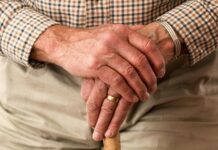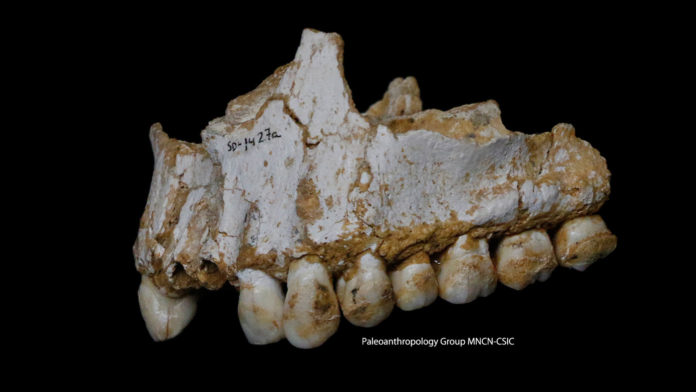Is it possible that Neanderthals knew how to self-medicate using plants? Although the evidence still leaves this up for debate, an analysis of dental plaque on the fossilized teeth of Neanderthal specimens is painting a picture of how our closest cousins lived and the types of foods they consumed.
The international study, led by researchers at the University of Adelaide and co-authored by adjunct professor Keith Dobney at Simon Fraser University, was published in Nature.
Unlike modern day people, Neanderthals didn’t brush their teeth, leaving behind lifetimes of calcified records of bacteria, food, and anything else that they may have put in their mouths, such as tools or ropes. The specimens were 42,000 to 50,000 years old, making this the oldest dental plaque ever analyzed, and a first for an extinct species.
The research team analyzed plaque from five Neanderthals from two sites: Spy, Belgium, and El Sidrón, Spain. They found that the two populations had different diets, based on the foods available to them locally. The Spy Cave site was located in a grassy environment that was also home to big game, enabling a meat-based diet that included woolly rhinoceros and wild sheep. By contrast, at the El Sidrón Cave site, the surroundings were densely forested, meaning a likely lack of large animals to hunt. The individuals there showed no evidence of meat in their diet, which instead included wild mushrooms, pine nuts, moss, and tree bark.
Now, here is where things start to get less conclusive, but more intriguing. With the lack of modern dental hygiene, it makes sense that some Neanderthals encountered tooth diseases. In the case of one of the specimens studied from El Sidrón, the individual had clear signs of a painful tooth abscess, as well as an intestinal parasite that would have caused acute diarrhea.
Unique to this specimen, his dental plaque contained traces of poplar, which is not considered edible but does contain salicylic acid, a compound used to make the active ingredient in Aspirin. The poplar may have offered some pain relief against the abscess. They also found traces of a mould which became the eventual source of the first antibiotic, penicillin.
Dobney believes this is strong evidence that Neanderthals used botanical sources for plant-based medicines long before the invention of pills. The argument would be even stronger if more fossils were studied that correlate the use of poplar with the presence of painful diseases.
The suggestion of medicinal plant use also matches with previous research from Neanderthal specimens at El Sidrón led by the Catalan Institution for Research and Advanced Studies in Barcelona, which demonstrated that although Neanderthals could taste bitter substances and would likely avoid eating them as part of their regular diet, they may have used chamomile and yarrow as medicines.
More than ever, researchers are finding more commonalities between modern people and Neanderthals, including that they used complex tools, had complex hunting strategies, and harnessed fire to cook their food. They also had rich cultural practices, which included wearing jewelry, creating artwork, and crafting symbolic objects. They were also likely to have spoken language.
All of this evidence points to a very different picture of Neanderthals than the dim-witted tropes of popular culture.








































